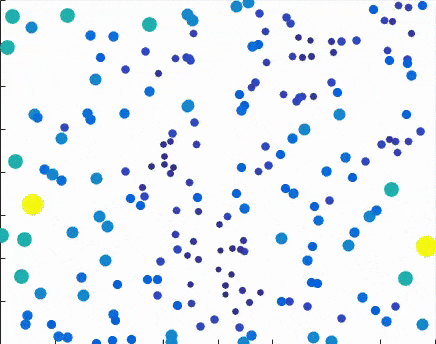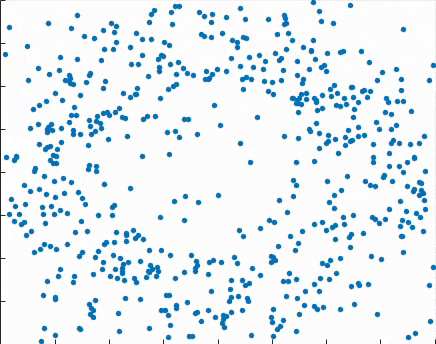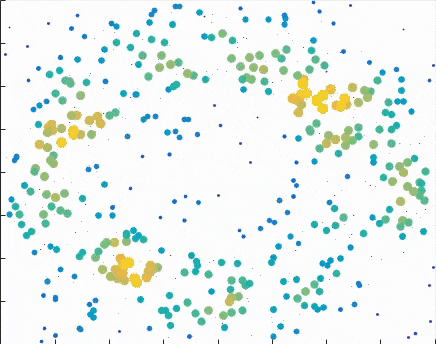Research: Combinatorics, Group Theory, and Topology
Multi-radius Persistent Homology
Associate Professors Greg Bell and Clifford Smyth worked with Graduate Students Austin Lawson, Joshua Martin, and James Rudzinski to consider a weighted persistence method that seeks to solve the outlier problem and the minimal cost coverage problem using the same mechanism.
The method assigns a scaling to the radii of the balls in the persistence algorithm. For the coverage problem, low density points are assigned large scales to increase radius, while denser points have slower growing radii. For the outlier problem, the situation is dual: we minimize the contribution of sparse points by assigning small scales to their radii.
The details and the algorithm are developed in a forthcoming paper.
 |
This is the evolution of the usual persistence for the covering problem. It can be seen that the radii of the balls grow at the same rate. |
 |
This is the evolution of balls with radii proportional to the codensity. It can be seen that the region is covered more efficiently. |
 |
Here the usual persistence is used to recognize points sampled from an annulus. The radii grow at equal rates. |
 |
Here the radii of the balls grow in proportion to the density so that sparse points are ignored. The annulus is recognizable for a longer time period. |





